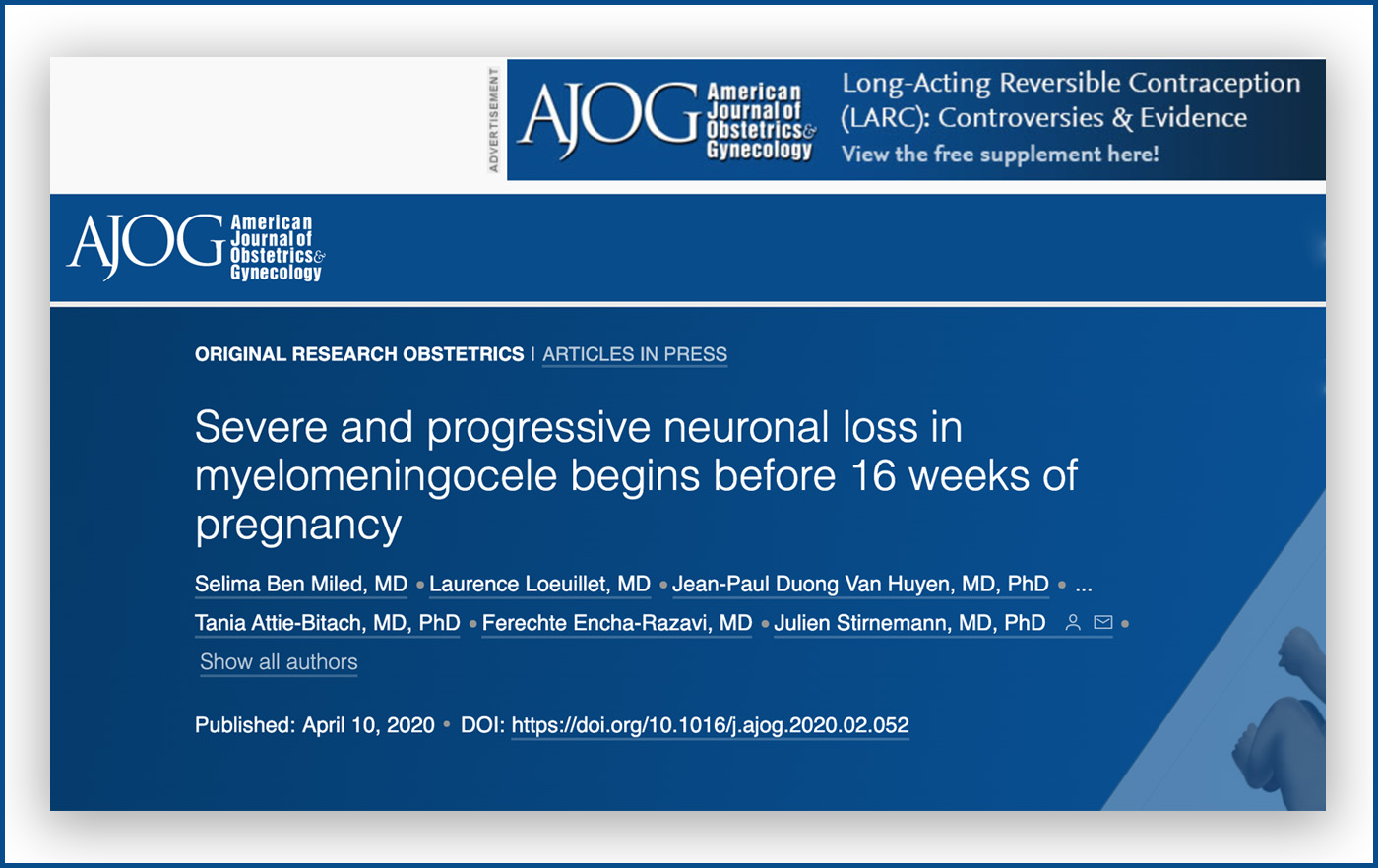Selima Ben Miled MD a, b, e, Laurence Loeuillet MD b, Jean-Paul Duong Van Huyen MD, PhD c, Bettina Bessières MD b, Amel Sekour MS b, Brigitte Leroy MD f, Julia Tantau MD f, Homa Adle-Biassette MD, PhD g, Houria Salhi MD b, Maryse Bonnière-Darcy MD b, Aude Tessier MD b, Jelena Martinovic MD b, Frédéric Causeret PhD h, Julie Bruneau MD, PhD c, Yoann Saillour PhD h, Syril James MD d, Yves Ville MD, PhD a, e, Tania Attie-Bitach MD, PhD b, i, Ferechte Encha-Razavi MD b, Julien Stirnemann MD, PhD a, e
a Department of Obstetrics and Maternal-Fetal Medicine, Necker-Enfants Malades Hospital, AP-HP and Paris Descartes University
b Department of Histology-Embryology and Cytogenetics, Unit of Embryo & Fetal Pathology, Necker-Enfants
Malades Hospital, AP-HP and Paris Descartes University
c Department of Pathology, Necker-Enfants Malades Hospital, AP-HP and Paris Descartes University
d Department of Pediatric Neurosurgery, Necker-Enfants Malades Hospital, AP-HP and Paris Descartes University
e EHU FETUS, Université de Paris and IMAGINE Institute
f Department of Pathology, Poissy Saint Germain-en-Laye Hospital, Versailles Saint-Quentin-en-Yvelines University
g Department of Neuropathology, Lariboisière Hospital, AP-HP and Paris Diderot University
h Institute of Psychiatry and Neuroscience of Paris, INSERM U1266, & IMAGINE Institute
i INSERM UMR 1163, IMAGINE Institute
Background
Despite undisputable benefits, midtrimester prenatal surgery is not a cure for myelomeningocele (MMC): residual intracranial and motor deficits leading to lifelong handicap question the timing of prenatal surgery. Indeed, the timing and intensity of intrauterine spinal cord injury remains ill defined.
Objective
We aimed to describe the natural history of neuronal loss in MMC in utero based on postmortem pathology.
Study Design
Pathology findings were analyzed in 186 cases of myelomeningocele with lesion level between S1 and T1. Using a case-control, cross-sectional design, we investigated the timewise progression and topographic extension of neuronal loss between 13 and 39 weeks. Motor neurons were counted on histology at several spinal levels in 54 isolated MMC meeting quality criteria for cell counting. These were expressed as observed-to-expected ratios, after matching for gestational age and spinal level with 41 controls.
Results
Chiari II malformation increased from 30.7% to 91.6% after 16 weeks. The exposed spinal cord displayed early, severe, and progressive neuronal loss: the observed-to-expected count dropped from 17% to ≤2% after 16 weeks. Neuronal loss extended beyond the lesion to the upper levels: in cases <16 weeks, the observed-to-expected motor neuron count was 60% in the adjacent spinal cord, decreasing at a rate of 16% per week. Progressive loss was also found in the upper thoracic cord, but in much smaller proportions. The observed-over-expected ratio of motor neurons was not correlated with the level of myelomeningocele.
Conclusions
Significant neuronal loss is present ≤16 weeks in the exposed cord and progressively extends cranially. Earlier prenatal repair (<16 weeks) could prevent Chiari II malformation in 69.3% of cases, rescue the 17% remaining motor neurons in the exposed cord, and prevent the extension to the upper spinal cord.
